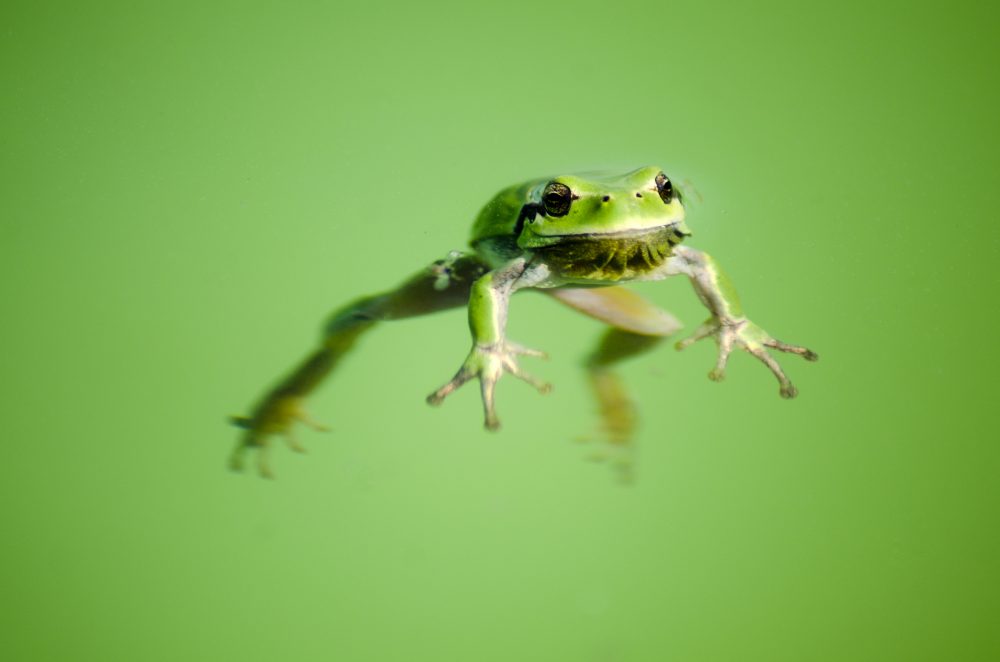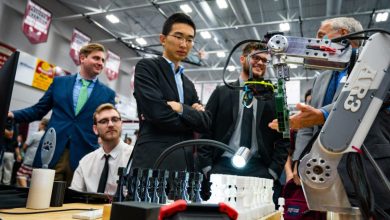Biology Majors Know It’s Not Easy Being Green
Calling all biology majors! When is the sound of two frogs in the throes of passion important?
Always!
Because the mating calls of frogs and toads hold key insights into environmental health.
Frogs have been around for nearly 300 million years. But since the 1980’s, more than 120 species have become extinct, causing great concern to scientists and researchers.
It’s also very troublesome to conservation biology and ecology (now called marine conservation) major, Sebastian Martinez and marine biology major, Palomera Baez.
So much so – the biology majors took it on as their student design project. They called it “Factors affecting the anuran presence in Brevard County, Fl.”
“This project basically focuses on using frog and toad mating calls and the percentages of different factors (urbanizations, wetlands, woodlands) to try and understand which factors affect each species presence and abundance,” Martinez said. “Understanding why a species is or is not at a specific site is immensely important for its conservation.”
But why are frogs so important?
They are an important part of the ecosystem: They are predators and prey (middle of the food chain).
Pest Control: They help control insects that may be agricultural pests or carry diseases such as West Nile virus.
Medicine: Frogs have been used extensively in medical research. Many Nobel Prizes in medicine and physiology have involved frog studies.
Education and research: Everything from non-addictive pain killers to cancer cures. African Clawed Frog (Xenopus laevis) is the modern day “lab rat.”
Culturally significant: Frogs play an important role in the world’s culture.
They serve as indicators of environmental health: They are very sensitive to pollutants. Because their skin is used for gas exchange in most species.
“Anurans are relatively simple to study during their breeding season by monitoring their mating calls. By using the intensity of their mating calls, I was able to estimate the relative abundance and presence of these species,” Martinez said. “With that information, paired with the percentage of urbanization, wetlands and woodlands around seven different wetland sites, I ran statistical analyses.”
Biology majors team up
The duo found that habitat loss is a main cause of anuran decline. But individual species are affected differently by certain factors.
“I believe that a combination of many factors affects anuran presence in the county,” Martinez said. “However, it seems like some factors affect some species more than others. Every species has their specific habitat needs as each species is very unique.”
For example, their results showed that the Pig frog (Lithobates grylio) will decrease with future habitat loss. The Eastern Narrow-mouthed Toad (Gastrophyrne carolinensis) will benefit from human-influenced drainage patterns. And the arrival of the exotic and predatory Cuban Tree Frog (Osteopilus septentrionalis) may in time reduce the anuran diversity of the richest habitats.
“Over the years, I have carried out various studies that have strongly suggested that anuran diversity will decrease as urbanization increases,” Martinez said. “Nevertheless, I wanted to focus on the effect of various factors on specific species because every species has a variety of specific habitat needs.”
The biology majors hope that their research model could potentially be used to predict the future abundance of another species and determine what can be done to help preserve it.
But the frogs aren’t the only ones happy about their research – The judges at the 2017 Northrop Grumman Engineering & Science Student Design Showcase were too. The team took home Best in Show for the College of Science in the Biology of a Changing Planet division.
%CODE1STUDENTDESIGNWEBSITE%






